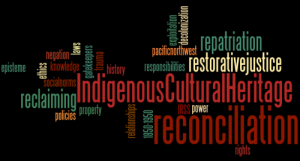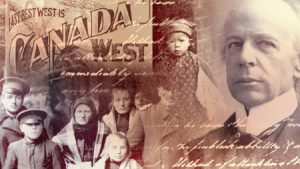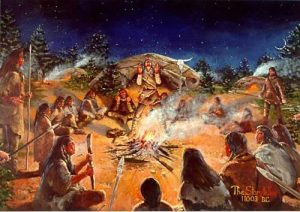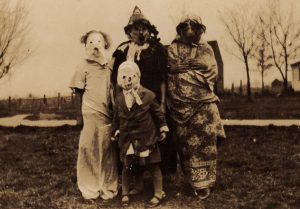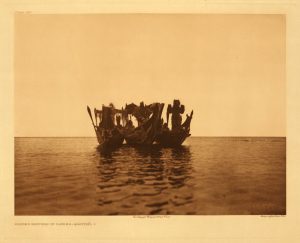
Write a blog that hyper-links your research on the characters in GGRW according to the pages assigned to you. Be sure to make use of Jane Flicks’ GGRW reading notes on your reading list. Prof will assign us pages to read on our Student Blogs.
The analysis of the characters presented in pages 1-15 of “Green Grass Running Water” by Thomas King focuses on the importance of Native narratives in the introduction of stories as a strong component for efficient story telling. For example, King demonstrates the theme of the Native narrative as a necessary component of story-telling when Robinson Crusoe, Ishmael and Hawkeye were unable to understand Lone Ranger when he started his stories in English, but collectively understood him when he started to speak in the Native language (15). The importance of native narratives in story telling is demonstrated by King through sarcastically mocking the settler colonial narratives and focuses on the over-looked theme of Native oral narratives.
King’s introduction to the book which indicates that water was the only form of existence in the beginning reinforces the Native myth’s of the importance of water being the first element on earth and how water once covered the entire world (Creation Stories First Nations). According to the Mi’kmaq myth of the ‘Two Creators and their Conflicts’, the water that covered the earth was comprised of tears from the grief of the Sun when discovering that the family had killed each another (Creation Stories First Nations).
In the beginning of the book, Coyote is interacting with his dream which keeps waking him up by insisting that it is in charge of the world (1). Coyote’s dream begins to question the identity of Coyote, in which Coyote responds stating that he is Coyote and that he is very smart (2). Coyote’s dream then begins to turn into a dog dream and complains that he is only a ‘little god’ and questions why he isn’t a ‘big god’, which further continues to irritate Coyote (2). Coyote begins to tell the dream about the story explaining where all the water surrounding them came from (3).
According to Flick, Coyote is a trickster figure in the mythology of conventional Native North American stories who is credited as the creator of the world, human life, and culture (143). Historically in the Navajo Faith, Coyote is believed to be a companion to The First Man and Woman (3). Furthermore, Coyote is referenced as a stealer of dreams and people and is also associated with witchcraft in the Pueblo literature where he is a negotiator between the spirit and human world (3).
Dreams are powerfully embedded with unique symbolic implications in the First Nations culture. For example, in Inuit mythology, dreams are indicative of a future event that is going to happen; dreams of birds could indicate a potential blizzard, dreams of weasels could mean trouble and dreams of polar bears have sexual implications (Houston).
Lone Ranger prepares to tell a story to Ishmael, Robinson Crusoe and Hawkeye. Lone Ranger begins telling his story using phrases such as “Once upon a time…” (11) or “A long time ago in a faraway land…” (12) which are emphatically rejected by Hawkeye, Ishmael and Robinson Crusoe, denying Lone Ranger the opportunity to start his story. After reconsidering who should tell the story, the group accepts Lone Ranger’s final attempt at telling the story when he begins his story in the Native language opposed to English.
The Lone Ranger has been alluded to as a hero in literary references to western books, 50’s movies and television (141). Specifically, a historical/mythical reference includes the Texas Rangers who had been killed in an attempt to track down a gang of criminals, except for one of the Rangers who was then considered the ‘Lone Ranger. Tonto, who was Lone Ranger’s First Nations friend, made Lone Ranger a mask made out of his brother’s vest, in efforts to conceal his identity from the criminals after his escape. According to Flick, Lone Ranger is considered a ‘Do Gooder’ who attempts to clean up the town by fighting crime (141).
Works Cited
“Creation Stories First Nations.” Sd91.bc.ca. N.p., n.d. Web. 21 July 2016.
Curtis, Edward S. Masked Dancers In Canoe. 1914. Northwestern University Library. Scalar.usc.edu. Northwestern University Library,, 2003. Web. 25 July 2016.
Flick, Jane. “Reading Notes For Thomas King’s Green Grass, Running Water.” Canadian Literature 161-162. (1999): 140-172. MLA International Bibliography. Web. 21 July 2016.
Houston, James. “Inuit Myth and Legend.” The Canadian Encyclopedia. Ed. Zach Parrott. Historica Canada, 07 Feb. 2006. Web. 21 July 2016.
King, Thomas. Green Grass Running Water. Toronto: Harper Collins, 1993. Print.
Maithreyi, Gollakoti. “Reconstructing Identities through Intertextuality: A Critical Study of Thomas King’s Green Grass, Running Water.” Ed. Vishwanath Bite. The Criterion: An International Journal in English 4.5 (2013): 1-10. Web. 21 July 2016.
Thompson, William. “The Legend of the Lone Ranger.” Weirdscifi.ratiosemper.com. Classic Media Inc, 2014. Web. 21 July 2016.

